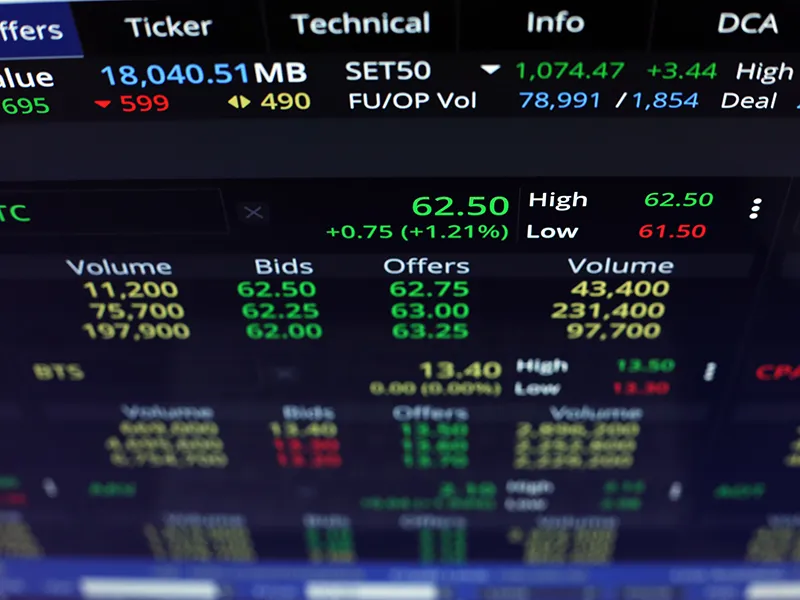
The current market trends have shown a good jump in the share prices of many stocks as well as the index in general. It has attracted many new investors especially post covid. However, an essential aspect to understand is that the investors and traders need to have a thorough understanding of all the fundamental and technical analysis to make sure that their investment is profitable. An important part of learning about the stock markets and technical analysis is the ability to read stock charts.
Given below are the meaning and a few related details of the stock charts.
What are stock charts?
Stock charts are part of the technical analysis of the stocks. It is a graphic expression of the price and volume movements of a particular stock or the index. Stock charts are an important tool for traders and investors to make sound decisions regarding the buy or sell decision of any stocks or the entry and exit from the stock markets.
Like any other chart, the X-axis and the Y-axis denote separate features to track which help the investor or trader make a decision. The X-axis of the chart represents the time frame selected by the trader or the investor. The Y-axis, on the other hand, represents the price or volume movements of the stock. Stock charts help understand the real-time price and volume movements as well as the past performance of the stock through historic charts.
Why are stock charts important?
Without the ability to read stock charts, investing or trading in stock markets will be like driving on a really dark road without any guiding light. Stock charts help the investors and traders learn not only about the individual stocks but also the target industry or even the index. Investors or traders can modify the charts to suit their needs by selecting the required time frame and their area of concentration on the macro or the micro level.
Using the stock charts correctly can help the investors and traders make better decisions regarding the stock momentum, the current interest in the stock by the peers, the ability to make profits in the short term, determine the current volatility of the stock, the increasing or decreasing trend of the market, etc. The ability to read and understand the implications of stock movements based on the stock charts provides the investors and traders a better chance to react to the price and volume movement of the stocks than as compared to novice traders and investors and tells them if the stock price is behaving in a normal or abnormal fashion.
What are the types of stock charts?
There are many types of stock charts that can be used as a reference to study the price and volume movements in a particular time frame. Some of the common types of stock charts often used by most investors and traders are mentioned below.
Head and shoulder
This is one of the basic stock charts that is used by investors and traders. It is used to understand if the price trend of the stock is going to reverse or not. The price movement of the stocks is shown in short peaks and the tallest peak where the short peaks are known as ‘shoulders’ and the tallest peak is known as the ‘head’. In the head and shoulder stock charts, there is a ‘Top’ which is formed at the highest point of an upward movement. It also signals the beginning of a downward trend. Similarly, there is also the lowest point known as ‘Bottom’ which signals the reversal of the current trend.
Bar charts
Bar charts are one of the most common stock charts often used by the majority of traders and investors. It provides multiple information to the traders and the investors like the opening and closing price of the stock, the highest and their lowest price that the stock touched on the day’s trade. The vertical line in these charts represents the range whereas the horizontal line pointing left represents the opening price and the horizontal line pointing right represents the closing price.
Candlestick charts
This is another form of stock chart widely used by traders and investors to track the price and volume movements of any stock or index. This chart also informs them of the opening and closing prices as well as the highs and lows of the day. A candlestick chart has a body and a shadow. The body of the candlestick chart is formed between the closing and opening prices of the stock. If the candle body is green it shows that the stock closed at a higher price than what it opened at and will be red in the opposite case.
Point and figure charts
It is a simple stock chart that tracks the price movements but in a slightly different fashion against the usual time-based charts. An increase in the price level is depicted with an ‘x’ mark on the chart and a decrease in the price level is marked using an ‘o’.
How to read stock charts correctly?
There are many factors to be understood in learning about the stock charts as well as the way to read them correctly. Some of the important factors for the same are mentioned below.
Identify the correct chart
The first step in reading a stock chart is identifying it correctly to be the chart of the desired stock. Traders and investors can look for the company symbol or mark or alphabetic identification. It is also known as the ticker.
Select the time frame
The next step is to select the time frame that the investor or the trader wants to analyze the stock for. Adjusting the time frame will let the investor and trader identify short and long-term trends.
Keep track of price movements
The stock charts are divided into two sections (upper and smaller lower) which provide information about the prices changes. The former or the upper part tracks the price volatility of stocks over the period. Also, the prices are often shown in different colors. For example, if the stock trading is closed up on a particular day, the marker may be black and the price at which the stock closed may be marked in red.
Track the volume traded
Another important aspect of stock charts is the volume at which the stock is traded which is found at the bottom of the chart. The changes in the volume to be traded whether positive or negative is depicted by colour-coded bars. Such color-coding is not pre-fixed therefore requires careful analysis. The movement of the volume and closing price in comparison to the previous day’s closing price is represented by a specific color and needs to be analyzed carefully.
Track the moving averages
Moving averages are used to calculate the average price of the stock over a period of time. Traders and investors track the moving averages based on various time frames like 200-day moving averages, 1000-day moving averages, etc. Such moving averages are usually indicated by lines cutting across the chart to create a trend pattern. When the price of a stock moves beyond the moving average, the market is considered to be on a bullish trend. On the other hand, if the price of the stock does not cross the moving average mark, the markets are considered to be on a bearish trend.
Conclusion
Learning the ability to read stock charts primes the investors and traders with a good tool for stock analysis. It is part of the technical analysis of the stocks which is an essential aspect along with the fundamental analysis of the stocks. Reading stock charts is a skill that needs to be developed over time to gain an upper edge to improve the profitability of the investment portfolio.
FAQs
The basic volume pattern for any stock or index is,
-Higher volume trade on up days
-Higher volume trading on down days
-Lower volume trade on up days
-Lower volume trade on down days
Some stock charts show the PE ratio, market capitalization, dividend per share, etc. of the stock as a key measure of stock analysis.
Some of the common techniques used to read the stock charts are trend lines, changes in volume, support, and resistance, etc
the different types of candles used to read stock charts are bullish candles, bearish candles, rejection candles, and indecisive candles.


























